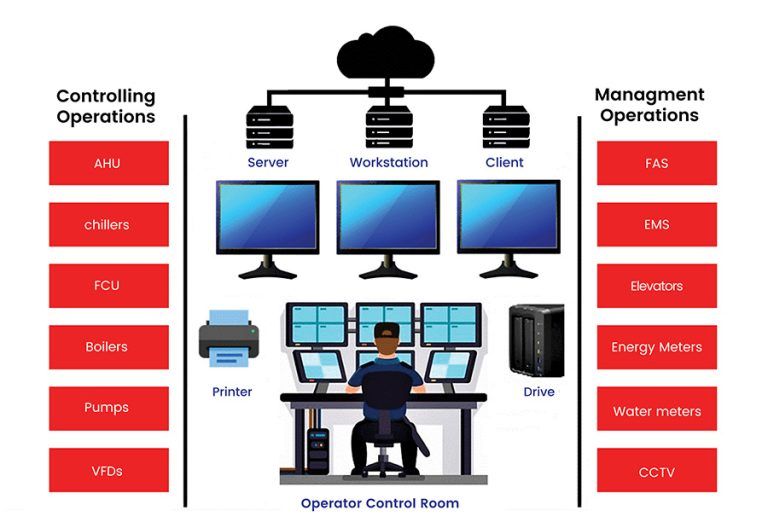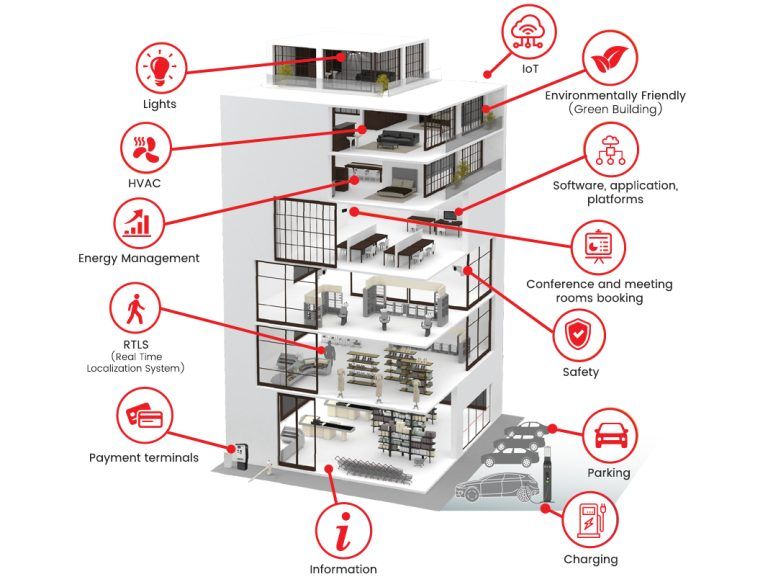Building services are systems installed in buildings to make them comfortable, functional, efficient and safe. They can be controlled by simple mechanisms such as manual switching, clocks or detectors such as thermostats or motion detectors, or they can be controlled by more complex building management systems (BMS).
Building management systems are computer-based systems used to monitor and control building services such as:
- Lighting.
- Heating, ventilation, and air conditioning (HVAC).
- Fire, smoke detection and alarms.
- Motion detectors, CCTV, security and access control.
- ICT systems.
- Lifts.
- Industrial processes or equipment.
- Shading devices.
- Smart meters.


Building management systems help building managers understand how buildings are operating and allow them to control and adjust systems to optimize their performance. As well as collating data and allowing ease of control, BMS can help; visualize data, automatically generate reports and create alarms and alerts when parameters are exceeded, failures occur, or with prognostic systems, when failures are likely to occur. They can also allow comparison between spaces, buildings and benchmark data.
The effectiveness of BMS will depend on the range and quality of the information it receives from sensors and the programming of how this information is used. For example, information about external and internal conditions can be used to determine the level of heating required so that plant can be activated and a building pre-heated before occupants arrive.
BMS can help:
- Give better control of systems and conditions.
- Data gathering and report generation.
- Increased productivity.
- Allow better informed response to complaints.
- Allow allocation of operating costs within a business or to tenants.
- Allow more targeted use of resources for replacement and maintenance of equipment.
- Early detection of issues.
- Reduced operating costs and carbon emissions.
- Improved equipment life.
- Improve safety.
